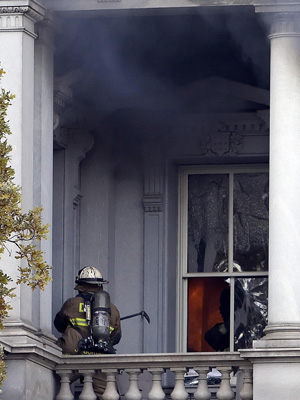
One of the more intriguing images from the live TV coverage of the fire in the Eisenhower Executive Office Building in Washington was the removal of items of furniture from the floor that was on fire. One firefighter dragged out a table of some sort, pushed it up onto a railing and was ready to let it go, as if he was fighting a blaze at Joe’s Trailer Park and Bait Shop.
For all I know, it was a little something someone picked up WalMart. Or it was a one-of-a-kind, hand carved, cherry table presented to the U.S. from the King of Somewhere.
How would the firefighters know? That the table didn’t take a tumble from the burning building at least suggests that fighting a fire in a historic building requires more finesse than just putting the fire out.
And, in fact, it does. The government commissioned a study years ago and came up with a “compartmentalization” approach, in which fire protection is designed around “compartments” within the building, according to Richard Forrest at buildingconservation.com.
The assessment also needs to consider any occupier requirements that may have an effect on fire strategy. For example, where a stately home or a museum is concerned the need to salvage artefacts could well represent an important factor in the final definition of the fire plan for the premises. Having identified and quantified fire risk, the basis of fire safety design must be defined, always taking into account the requirement to satisfy life safety issues, and to balance property protection issues against physical intrusion.
In Minnesota, the Minnesota Historical Society has put together a disaster plan for historic buildings, although it doesn’t specifically address firefighting issues.
(Photo: Jim Watson/AFP/Getty Images)
